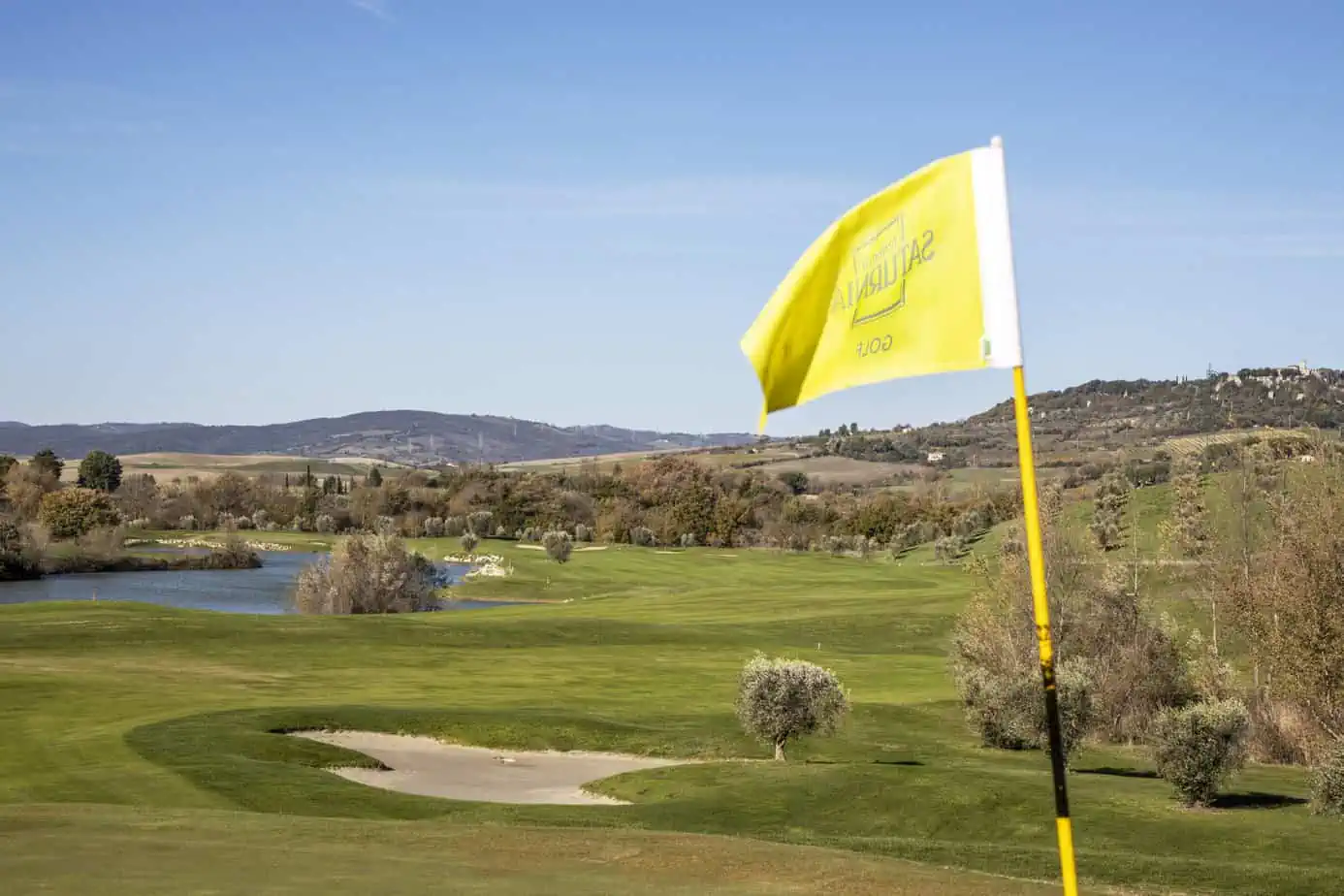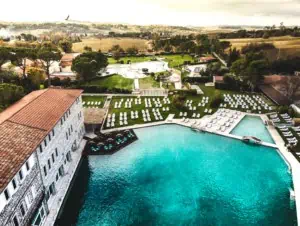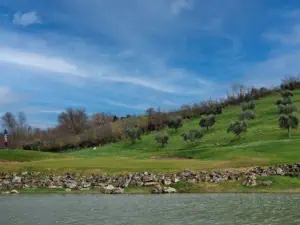Terme di Saturnia: Sustainable deceleration in Tuscany
This is a foray into a possible future of golf. To a world where pesticides are completely banned. In Terme di Saturnia, Italy, the scenario that Europe’s golf scene has been discussing since the EU Commission proposed a complete ban on sprays has long been a reality. For a simple reason: the luxury resort with 18-hole golf course is located in thermal water area. The use of pesticides is not allowed.
Thermal water on the greens
Anyone arriving here immediately smells the sulfur. For 3000 years the sulfurous thermal water, which was already used here 3000 years ago in Roman springs, has been the basis of Italy’s largest thermal area. You wouldn’t expect it to be used on the greens of the 18-hole course, of all places. “In 2010 that was, at one point I was standing at the bar in an inn and an old man told me that he also uses the water for the garden and the fields,” recalls head pro Procolo Sabbatino. “Since then, we usually spray it on the greens once a week”. After a cautious test phase, the thermal water came into regular use. The sulfur content is 0.527 percent per litre. “It strengthens the grasses,” Sabbatino recognized. The approach is unusual, but looking at the well-manicured greens, you can see: it works.
In Terme di Saturnia, a sustainable operation of the golf course has always been the basis of greenkeeping due to the thermal baths. The championship course was built with a lot of earthmoving, but the use of water-saving Bermuda grass has turned out to be the perfect decision in recent dry years because comparatively little water was needed. Beyond the fairways, a high-quality natural landscape has since developed. Large hedges and countless trees attract birds, rabbits and small animals can be seen at every turn.
Olive oil production on the golf course
Hundreds of olive trees, which line green complexes and fairways, are used for the production of its own olive oil. Golf purists may be bothered by the numerous daisies that bloom in the semirough. It is one of the consequences of pesticide-free care. The golfer must and can live well with a little more weed here. On the greens, however, Sabbatino and his greenkeeping team have the weeds under control due to constant mechanical maintenance.
Golf tourism in this place means deliberate deceleration for the guest. With only 150 club members and few green fee players, this is not about tee time reservations or round average times. “Every golf course has a life,” Sabbatino muses to himself. You just have to take your time and develop a feeling for it. Anyone who tries for 18 holes to master the thoroughly demanding course with first-class modern design by American Ron Fream knows what he is talking about. Golf here is also an overall experience that results from a balance between sports facilities and nature.
The certification with GEO was one of the first Italian golf courses to go through it back in 2014. The idea of social and environmental sustainability just fits into the overall concept. Terme di Saturnia is the biggest employer in the area, a large part of the employees have been working here for years. The gastronomy sources wine, meat and a large part of all products from the region. The port of Grosseto is only 90 minutes drive away. “Even the fish doesn’t come from far away,” points out General Manager Antonello Del Regno. When it comes to regional supply chains, the resort is in a top position. “The rule with us is farm to table.”
Deceleration for the golfer
“Guests are increasingly looking for a vacation that is integrated into the region,” Federica Bucciotti has also noted. With her product, the marketing boss operates in a wellness and spa market in which, for example, the Lanserhof in Austria or the Resort Bad Ragaz in Switzerland also work. “The goal and the idea of setting up as a sustainable destination was really helpful,” she says. Avoiding plastic waste and switching to glass bottles was just one of numerous projects. The use of solar energy is next on the agenda.
The realization of reconstructions within the large hotel area is not quick. The Italian approval process is not easy, according to reports. The purist image of Tuscany, the unspoiled landscapes, original towns are based on the rigid control of the authorities, which has preserved the originality of this part of Italy. A modern hotel tower like the one in Bad Ragaz will probably never be built here. It doesn’t need to: then the wonderful cypresses couldn’t tower over the buildings like that. But this way, the overall picture is coherent – and extremely calming.









